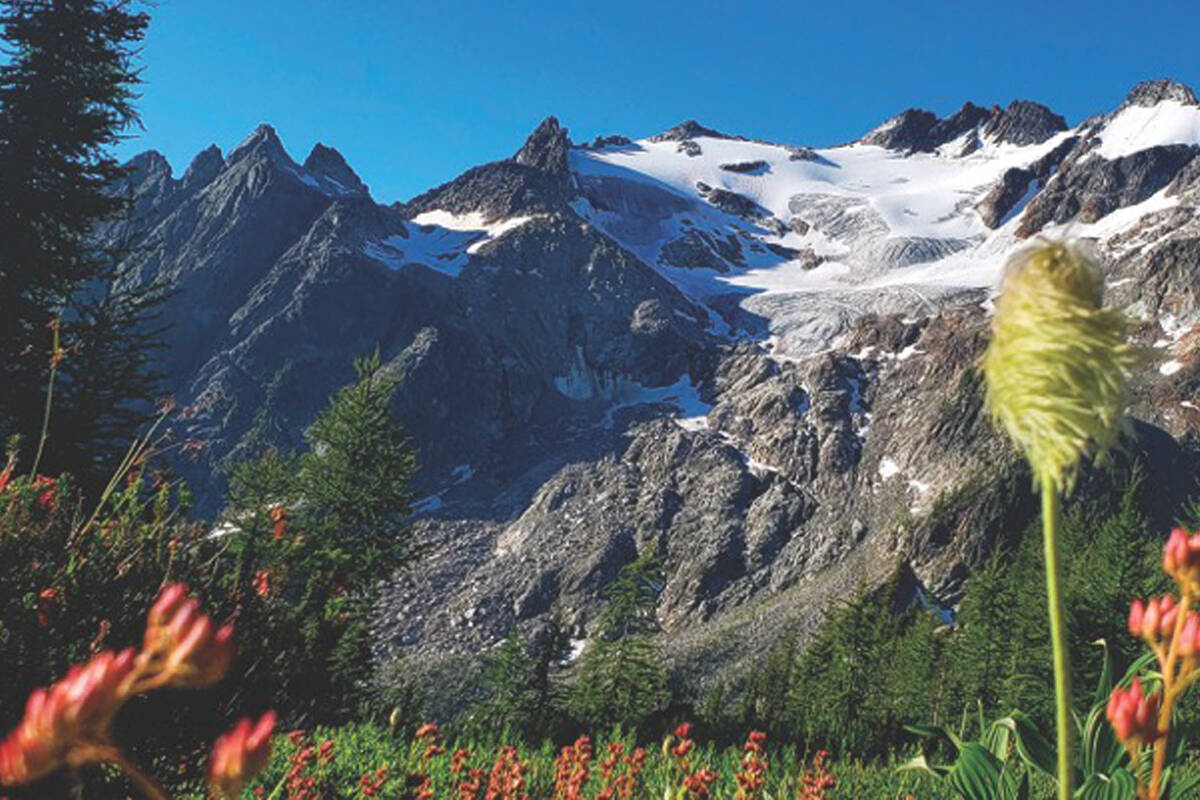by John Boivin
Local Journalism Initiative Reporter, Valley Voice
Scientists studying glaciers in the West Kootenay say local ice fields lost millions of tonnes of mass this summer, reinforcing fears about their long-term survival.
“It’s scary, but it’s not unexpected,” said Dr. Brian Menounos, an internationally renowned glaciologist at the University of Northern BC. “Climate scientists have been talking about this for several decades.
“It’s not a good-news story for the glaciers.”
Climate scientists say the relationship is clear: the end result of adding more thermal energy to the atmosphere is melting snow and ice.
Menounos uses historic and real-time satellite imagery to chart surface elevation changes to glaciers around the Earth. He says preliminary analysis from aerial flyovers this summer shows a huge loss for the Kokanee Glacier. The icefield’s surface lowered around 2.7 metres from 2020 levels.
“This year for that particular glacier was especially bad,” he says. “Those measurements show over the last year the Kokanee Glacier has lost about two metres of water equivalent. That’s a very strong year of mass loss.”
Kokanee Glacier is at the centre of the 320-square-kilometre Kokanee Glacier Park, and feeds more than 30 lakes and countless streams feeding into Kootenay Lake and the Columbia River system.
A combination of factors led to the massive ice loss. The months-long drought in the region reduced snowpack levels. That thinner snowpack was then peeled off the top of the glaciers by the extreme heat dome in July, leaving the main glacier ice exposed for the rest of the summer.
Melting was happening even at the tops of the highest peaks in B.C., says Menounos.
“What that did is quickly melt away that blanket of snow and exposed the ice to a much longer season of melt,” he says. Wildfire soot blanketing the icefields also promoted melting. “Then on top of that, you change how reflective those surfaces are by the tremendous wildfires we had this summer in BC.”
New Denver Glacier: gone by 2030?
The Valley Voice asked Menounos to check the status of the New Denver Glacier – a small icefield in Valhalla Provincial Park — to see if he could determine any effects from the summer. The results were disturbing.
“Really, in the last decade or so, we’ve seen a five-fold increase in the thinning rate on that particular glacier,” he says. “It went from neutral balance – gaining as much as it lost every year – to losing on average one-half of a metre of water each year.
“I don’t anticipate that is going to stop.”
If that glacier continues to see ice loss – and because of climate change, that’s the most likely scenario – it could disappear as soon as 2030, he says.
“Probably within my lifetime, certainly within my children’s lifetime, that glacier will cease to exist,” he says. “And that is going to be one of the glaciers that I would not be surprised we lose by the end of this decade.”
The loss of New Denver Glacier won’t mean an end to the watershed, says Menounos. Annual snowfalls should keep the water system flowing.
“The demise of New Denver Glacier … won’t necessarily affect the area of surface flow set by seasonal snow or unsolid precipitation,” he says. “But it’s the timing of it, the thermal stress that will occur if we lose our snow and ice. We’re just putting aquatic ecosystems at substantial stress, and they are already feeling stress from a number of factors.”
The icefield is like a reservoir of cold, and without it, the ecosystem loses an important balance.
“They are Mother Nature’s natural reservoir, ideally suited to releasing water when it’s needed,” he says. “Unfortunately, our actions – greenhouse gas emissions due to fossil fuel use – are causing those reservoirs to release water much too early and we’re depleting those reservoirs.
“If you take that thermal buffering capacity of glaciers away, you’re left with a situation where these aquatic ecosystems are going to change,” Menounos said.
The fate of the New Denver and Kokanee Glaciers is no different from the more than 16,000 glaciers and glacierettes in British Columbia, and the hundreds of thousands around the world Menounos’ team has studied. Their work, published in the journal Nature this spring, found the thawing rate of icefields globally increased fourfold between 2000 and 2019.
“We’re at the point in the greenhouse gas emissions where if they continue as business as usual, we won’t see a simple linear increase, but we’re expecting to see an acceleration of temperature rise,” he says. “By 2040-2050, you start to see a dramatic increase in temperatures.”
Glaciers are a crucial source of fresh water, here and around the world. More than a billion people could face water shortages as a result of glacier loss, the Nature study suggests.
“The need is critical to rapidly mitigate greenhouse gas emissions. It has to be done now,” Menounos says. “If you shut off the CO2 tomorrow, there’s still a lag to remove that excess carbon dioxide from the atmosphere. Stop it now and you’ll still see an increase.”
We all have to do our part if we’re going to change a bleak future, he says.
“One of the strong points people need to understand is we all play a role in solutions, and it’s not necessarily looking at things like recycling – which is important – but we have to look at our lifestyles and see what other sacrifices we are ready to make,” he says. “Some of the actions we do here will affect less fortunate nations and people have to understand that.”

